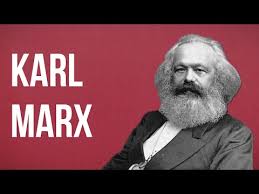 Professor Satya Narayan Misra in Bhubaneswar, May1, 2023: Karl Marx sowed the seeds of the labor movement when he wrote: ‘Capital is dead labor, which, vampire-like, lives only by sucking living labor & lives the more, the more labor it sucks’.
Professor Satya Narayan Misra in Bhubaneswar, May1, 2023: Karl Marx sowed the seeds of the labor movement when he wrote: ‘Capital is dead labor, which, vampire-like, lives only by sucking living labor & lives the more, the more labor it sucks’.
His theory of surplus value in the magnum opus Das Capital (1867) was not only a withering criticism of the singular obsession with wealth creation by free market exponents like Adam Smith but how labor is exploited by capital, & a utopic vision of a classless society where the principle would be “from each according to ability, to each according to need”.
The agitation in Haymarket Square in Chicago on 1st May 1886 started with a modest demand, eight hours of work per day, and is called May Day. The Russian Revolution of 1917 showcased the might of labor in full cry through the parades in Red Square. May Day is similarly celebrated in around 80 countries now, to create awareness about workers’ rights & recognize their accomplishments.
With Gorbachev’s advocacy of perestroika & glasnost and the disintegration of the USSR by 1991 & fall of the Berlin Wall, the voice of labor has become somewhat subdued, and concomitantly the celebration of Labor Day. While Francis Fukuyama wrote in End of History that communism is now passé & liberal democracy & free market ideology are the new endpoints of history, Marx remains the unconscious hand of history by sensitizing every free-market economy to eschew exploitation of labor & promoting equity & usher in an inclusive society.
The Indian Constitution has several pro-worker provisions, like a provision for a ‘living ‘wage (Article 43), ensuring a decent standard of life and full enjoyment of leisure and social and cultural opportunities, securing just & humane conditions of work & maternity relief (Article 42). The constitution was amended in 1976 asking states to take steps to secure the participation of workers in the management of undertakings, establishments or other organizations engaged in any industry (Article 43A).
 Interestingly, the welfare of labor including conditions of work, old age pensions, and maternity benefits appear in the Concurrent List of the Constitution, as per which both the Centre & States can legislate labor laws. This calls for synergy between the Central Laws & states implementing them.
Interestingly, the welfare of labor including conditions of work, old age pensions, and maternity benefits appear in the Concurrent List of the Constitution, as per which both the Centre & States can legislate labor laws. This calls for synergy between the Central Laws & states implementing them.
Many believe that one of the stumbling roadblocks in realizing the full potential of economic liberalization in India after 1991 is our rigid labor laws. The Central government has circulated four codes viz, Labor Codes, Industrial Relations, Social Security Code, Occupation Safety, and Health Code to the states to replace a large number of Central & State Laws. The Rajasthan government was the first to introduce labor reforms in 2014.
In a perceptive study, Goswami & Paul (2021) have brought out how labor-intensive industries restructured their product mix by reducing labor usage. The export-oriented industries use more contract labor. The study, however, brings out that the reforms have made a positive impact on Gross Value Addition (GVA) & productivity.
Another study brings out how labor-intensive plants in Rajasthan & Gujarat are almost 25% more productive than their counterparts in states like West Bengal. While industries view the labor law reforms as progressive, workers see them as anti-worker & regressive.
This takes us to the seminal work done by Thomas Piketty in his widely-read book: Capital in the 21st Century (2013) where he brings out how increasing income inequality between the rich, middleclass, and poor is not an accident of history but a feature of capitalism that favors the class owning capital. Based on data he brings out how the rate of return to capital is more than the increase in growth. The return on labor is the least. In fact, most studies clearly show that the real wage of workers has hardly increased compared to that of capital, increasing income inequality in different income brackets.
For instance, as per World Inequality Report (2019), while the share of the top 10% has increased from 37% in 1990 to 58% in 2018, the share of the 40% middle class has dwindled from 40% to 30% & of the bottom 50% from 23% to 12% only. Piketty strongly argues that such rising inequality can be reversed through state intervention by imposing/increasing wealth tax and tax rate on the top income group.
Paul Krugman, the Nobel laureate, brings out how during the Presidency of Ronald Regan in the early 80s he practiced the deadly cocktail of reducing tax rates on top income earners sharply along with union bashing. The % of the workforce in American unions fell down from 35% to 23% during Regan’s time.
Krugman calls this phenomenon a ‘double jeopardy’; He believes that a strong middle class and strong union are connected, as they provide an important counterbalance to the political influence of corporations. In the UK the relationship between Murdoch & Thatcher was also symbiotic. The ruthless suppression of the coal mine strike in 1984 & dismantling of pro-union laws was symptomatic of the corporate, conservative nexus in Britain under Thatcher.
 Marx sharply deprecated the ‘subsistence wage’ being given to workers, by which ‘he can subsist and perpetuate his race. Given the reserved pool of unemployed, the capitalist in the late 19th century, could get away with such inhumane wages. The Russian Revolution sounded the death knell of such subsistence wage, which has now given way to the living wage.
Marx sharply deprecated the ‘subsistence wage’ being given to workers, by which ‘he can subsist and perpetuate his race. Given the reserved pool of unemployed, the capitalist in the late 19th century, could get away with such inhumane wages. The Russian Revolution sounded the death knell of such subsistence wage, which has now given way to the living wage.
Piketty believes that all countries must veer towards a ‘fair wage’ & not just a living wage which will encompass access to quality education, health care, nutrition, skills & technology. It is only through the diffusion of knowledge, skills, and ideas of productivity that will lead to lower income inequality.
]
Amartya Sen’s capabilities approach is predicated on positive freedom like social opportunities, economic facilities, and political freedoms. Unlike John Rawls who places freedom over basic needs, Sen believes that a basic need like access to quality education is most critical for capability development. It’s a pity that despite the plethora of recommendations from the Kothari Committee (1966) to NEP (2020) to earmark 6% of GDP to education and the state taking responsibility for providing quality early childhood learning and basic education, the outcomes as per ASER reports is dismal for children studying in government schools.
The May Day is a grim reminder, of how liberal democracy is at a crossroads as the governing elites are subserving the interests of the corporate without caring enough for the workers & the poor. Shared prosperity, as Joseph Stiglitz writes, is not happening in free-market economies.



Leave a Reply
Be the First to Comment!